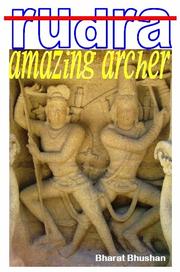Buy this book

Astras of the gods
It is thus written in ancient Indian mythology, that there could be more than 3,300 astras of the gods, especially the main vedic gods. Some of the important or often-mentioned astras include the brahmastra and the pasupatastra. Astras were meant to fight the wars of the gods against demons, asuras and rakshasas. Sometimes, the super-weapons were granted to devout asuras or rakshasas, as a result of stupendous meditation upon Gods. The Indrastra, Asurastra, Pramohana-astra, Devi-astra, Pashupati-astra or Pasupatastra, Shakti-astra, and the Chakra-astra were used in these wars and are mentioned on various occasions in the puranas.
Indra had his Vajra, the thunderbolt, while Shiva was known for his astras, the lightning-bolts. The Hiranyastra was one of the vajras of Indra, the Marutastra was the astra of the Maruts, and the Agni-astra, belonged to Bhairava and Shakti. There are many other similarly significant astras that are known to be particularly useful, such as the Vidyastra, the weapon of intellect, and the Vira Jayastra, the weapon for victory.
There are several weapons known in Hindu mythology. Each super-weapon is ascribed to their specified gods. These include the Agneyastra, Brahmastra, Sudarsana Chakra, Pasupatastra, Trishul, Garudastra, Varunastra and the Narayanastra. These weapons were used for deliberate purposes. The Agneyastra was to invoke fire upon the enemy, the Nagastra would bring forth thousands of poisonous snakes and the Varunastra was invoked to bring forth water to fight fire.
The Brahmastra of Indra or the Pasupatastra of Shiva or the Narayanastra of Vishnu could only be used once, when invoked in war, against one particular enemy, and therefore had to be utilised with great care. Upon use, these specific astras would return to the original owner. Rama used the Narayanastra in the battle with Ravana. The astra was later used by Ashwattama, son of Dronacharya, at Kurukshetra, on behalf of the Kauravas.
The most destructive astra of all, the Pashupati-astra of Rudra, was the most feared, since it belonged to Durga, the destructive manifestation of Parvati. Blessed by Shiva, Pashupatinath, and taught the manner of use of the astra, are two of the most significant individuals in the ancient puranas.
Shiva blessed Meghnad, the son of Ravana, in the Treta Yuga and Arjuna, the third of the Pandavas, in the Dvapara Yuga, with the Pasupatastra. Both warriors were instructed to be careful in the use of the astra, for it was the most destructive weapon of Shiva, capable of being discharged even by a thought in the mind, eyes, words or a bow. The pre-condition was to use it only for dharma.
The paradox is paramount in the nomenclature of the astras, when one considers the pasupatastra. Shiva, or Pashupatinath, is also known as the Lord of the animals, and their protector. So, how could the pasupatastra be thus named, to be the most destructive of all, capable of destroying creation itself?
Buy this book

| Edition | Availability |
|---|---|
|
1
Rudra - Amazing Archer: The epic-poem Kiratarjuniya - The battle between Shiva and Arjuna
2011, Harini
Paperback, E-edition
|
aaaa
|
Book Details
Published in
Lonavala, India
Table of Contents
Contributors
The Physical Object
ID Numbers
Community Reviews (0)
Feedback?| November 28, 2011 | Edited by Bharat Bhushan | Added new cover |
| November 28, 2011 | Edited by Bharat Bhushan | Included more information about the book |
| November 28, 2011 | Created by Bharat Bhushan | Added new book. |









